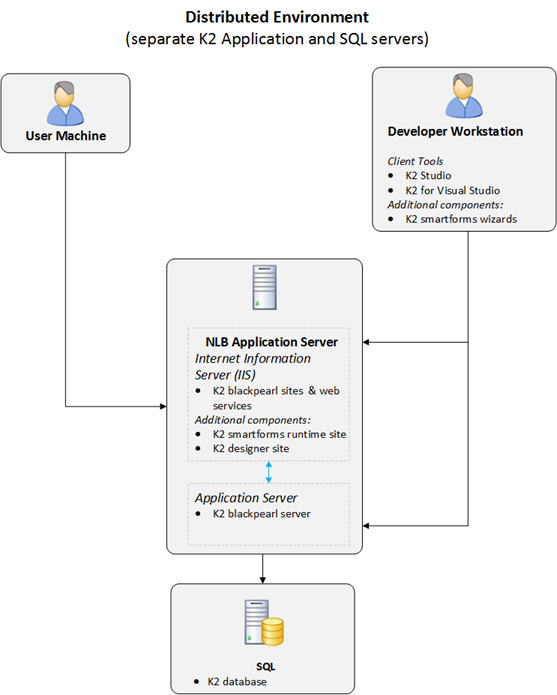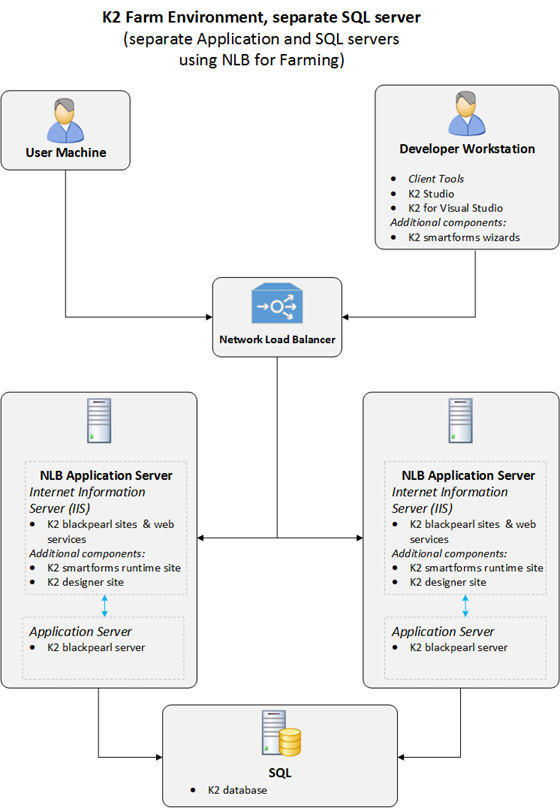Distributed Environments
A distributed environment consists of separate IIS, Application and SQL servers.
Although it is possible to install the K2 web components (K2 workspace, K2 smartforms runtime site, K2 designer site) and K2 application server components on separate physical servers as described in this diagram, for better performance the recommended approach is to install the website components and application server components on the same physical machine, as described in Separate SQL Server and Distributed Environments.
The following topology does not include integration with SharePoint. If SharePoint integration is required see the appropriate SharePoint section: SharePoint 2013, 2016 and Online or SharePoint 2010.
Distributed environment, single servers

Distributed environment, single servers, recommended approach for better performance

Distributed environment, Farm/NLB servers


| Distributed Install | |
|---|---|
| User Machine | N/A |
| Developer Workstation |
Client Tools:
|
| Web Server(s)* |
|
| NLB Application Server(s)* |
|
| SQL |
|
| *for better performance it is recommended that the Web Server and Application Server components be installed on the same physical machine. | |
Considerations
- For better performance, the recommended approach is to install the website components and application server components on the same physical machine, as described in Separate SQL Server and Distributed Environments.
- The same version of K2 blackpearl must be installed on all K2 servers in the distributed environment.
- The same version of K2 smartforms must be installed on all IIS servers in the distributed environment.
- In a distributed environment, K2 Pass-Through Authentication (PTA) or Kerberos is required to pass user credentials between physical or logical servers.
- Distributed Transaction Controller (DTC) must be configured properly for communications between the K2 Server and the SQL Server to function properly.
- Network connection speed between the Application Server and the SQL server must be as fast as possible with as little latency as possible (physical servers should preferably be on the same Gigabit-backbone.)
- It is not recommended to geographically separative the SQL Server from the application servers since this can introduce performance issues due to low bandwidth or latency between the K2 application servers and the SQL server.
- The SQL Server can share physical resources with other SQL databases or SQL Server Instances on the same SQL server, or be located on an dedicated SQL server/instance, or be located on an Azure SQL DB.
- K2 recommends that SQL administrators track performance of the SQL server and address performance issues through standard Microsoft SQL Server scaling approaches.
- Clients access Workspace via the IIS Server operating from the K2 Server. If the user environment expands so that the performance of the K2 Server is affected by the number of users logging onto K2 Workspace, it is advised that the K2 Workspace be relocated to a different server.